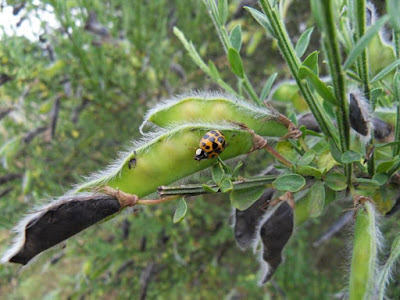Take a look online and you will see quite a few methods of how to grow an Orange tree from a seed. From soaking the seeds for a few days, and then placing them in moist see-through bags and placing in a spot that gets some sun etc, to just planting them in some soil and leaving on a window sill somewhere. To be honest, all of these methods work, especially if you put the odds in your favour by planting many seeds. This is a sure way to get some sprouting. Anyway, today I'm going to tell you how I start orange plants from seed. I'm no expert, and I don't own an orange grove (orchard), but I have had considerable germination success from my method.

This is what I do. Eat some Oranges and save the pips (seeds). That's the tasty part. Leave them to dry for a few days, then grab them one by one and peel some of the outer shell (protective layer) off the seed, exposing some of the actual seed inside. On each end of the seed the outer shell goes a little bit pointed, so its not difficult to grab this and peel some off the end. This is to assist the seed to sprout quickly by allowing warmth and moisture to reach the seed more easily, and help it take its jacket off (protective layer) with less hassle. You don't need to peel much off, just enough so that some of the seed is exposed.
Then, just plant them in some wet soil, preferably in slightly acidic soil, at around half an inch deep, and put them in a window that gets some sun. Or better still, outside if the weather is nice and warm like it is here in the UK right now. If the weather is warm there is no need to cover the pot(s) with a see-through plastic bag or cling film. Just keep the soil wet and within a few days you will have some signs germination taking place.
If the temperature doesn't drop too low on the nights in your location, to make them strong and more resilient to the cold weather, leave them outside all night when they are very young (from first germination). I say this because most Orange trees are better suited for warmer tropical climates, they are not really tough enough to withstand the UK's fairly harsh in comparison autumn / winter seasons. So for your trees to stand a better chance of survival in the UK (depending on the variety), you need to get them gradually used to lower temperatures. Of course, in the winter, the UK is far too cold for young citrus / Orange plants / trees to survive.
So give them as much sun as possible through the warmer months, with some colder (but not too cold) nights, get them as big and strong as you can, and then
bring them indoors (keep in a window, conservatory or patio) once the temperatures drop really low. Preferably, keep them potted for quite a few years doing this process, and when they reach a good size and maturity, consider planting them outside in a spot that gets the most sunlight.
Don't expect to see fruits straight away though, as Orange trees can take many years to produce fruit if grown from seed. Still, even without bearing fruits, the leaves, and trees in general are beautiful to look at, and fragrant when touched. Everything talked about in this post will also work for lemon trees, too. In fact, most other citrus variety's.


